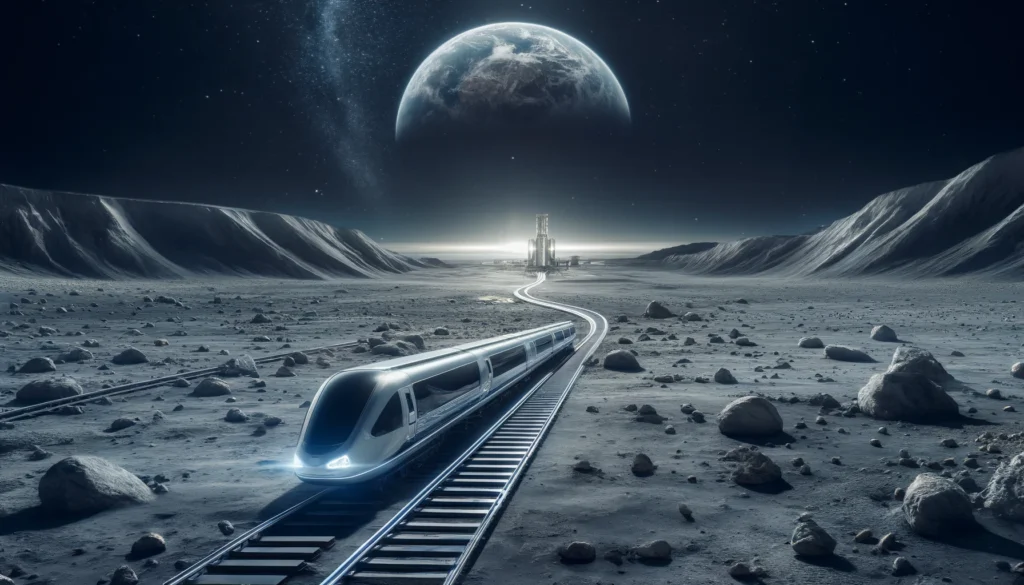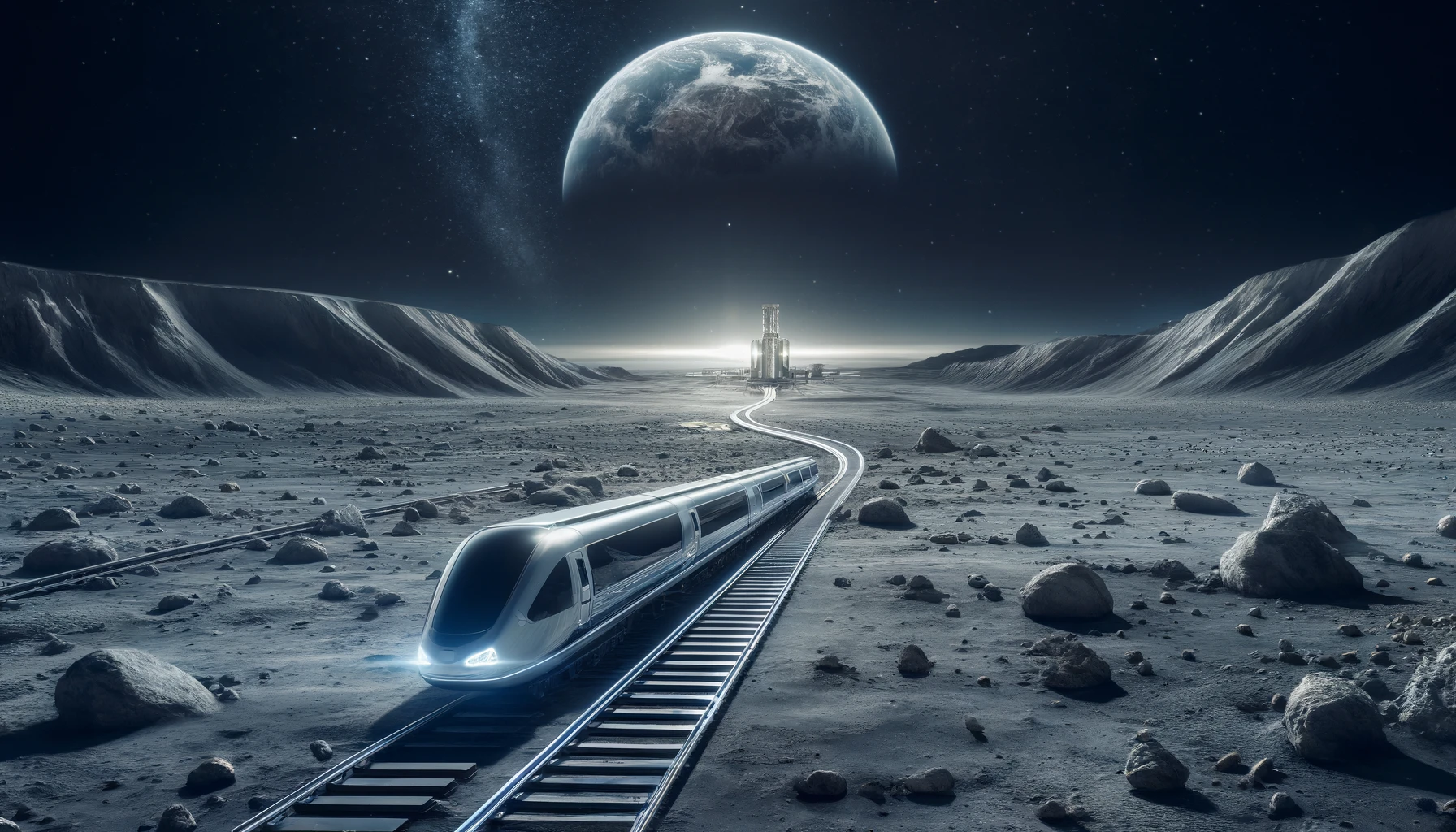“NASA, lunar exploration, Moon railway, space innovation, sustainable lunar transport, Artemis program, lunar infrastructure, Moon mining, space technology, lunar economy”
“Explore NASA’s groundbreaking plan to build a railway system on the Moon. This article delves into the technological challenges, potential benefits, and the role of such infrastructure in supporting sustainable human presence and resource utilization on the lunar surface. Discover how lunar railways could shape future space exploration and international collaboration.”

NASA’s ambitious vision for sustained lunar exploration and development includes a novel idea that seems like a leap straight out of science fiction: building a railway system on the Moon. This concept, though still in the early stages of discussion, aligns with the broader goals of establishing a permanent human presence on the lunar surface and developing the Moon’s resources.
The Rationale Behind Lunar Railways
The concept of a lunar railway system stems from the need for efficient, reliable, and scalable transportation methods on the Moon’s surface. The Moon’s harsh environment, characterized by extreme temperatures, vacuum conditions, and abrasive lunar regolith, poses significant challenges for traditional rover and vehicle technologies. Wheels and mechanical parts can wear out quickly, and the energy requirements for roving vehicles are substantial.
A railway system could potentially offer a more sustainable and robust solution. Trains on the Moon could be designed to operate autonomously and withstand the lunar conditions better than wheeled vehicles. They would run on tracks laid out across the lunar surface, connecting key points of interest such as landing sites, research facilities, mining operations, and potential habitats.
Technological and Engineering Challenges
Building a railway on the Moon presents numerous technological and engineering challenges. First, the materials used for the tracks and trains would need to be highly durable and capable of withstanding the temperature extremes, which can range from -173°C during lunar night to 127°C in the lunar day. Materials would either need to be transported from Earth or, ideally, sourced and processed directly on the Moon using in-situ resource utilization (ISRU) techniques.
The power systems for the trains are another major consideration. Solar power is a likely candidate due to the abundance of sunlight in certain lunar regions, particularly near the lunar poles or on the peaks of eternal light at the rim of Shackleton Crater. However, energy storage systems would also be critical to maintain operations during the lunar night or in shadowed regions.
Laying the tracks would involve robotic construction techniques, which would need to be largely autonomous due to the communication delay between the Earth and the Moon. These robots would need to operate in a highly coordinated manner, potentially using artificial intelligence to make real-time decisions and adjustments.
Potential Benefits of a Lunar Railway
The benefits of a lunar railway system could be significant. It would enable the transportation of heavy equipment and materials over longer distances than is feasible with current rover technology, facilitating more extensive lunar exploration and exploitation. It could also provide a reliable method for astronauts to travel safely between facilities or habitats.
Moreover, a railway system could support the lunar economy by enabling the efficient movement of mined resources, such as water ice from the poles, which could be used for life support and fuel production. This would be crucial for the sustainability of lunar bases and for supporting further space exploration missions, such as those to Mars.
Integration with Global Space Exploration Efforts
NASA’s plans for a lunar railway could integrate with international space exploration efforts. The Artemis program, which involves multiple countries and private partners, aims to return humans to the Moon and establish a sustainable presence by the end of the decade. The railway system could serve as critical infrastructure supporting not only American astronauts but also international crews and commercial entities.
Ethical and Environmental Considerations
The development of lunar infrastructure, including railways, raises ethical and environmental concerns. Preserving the pristine lunar environment and preventing contamination are paramount. There is also a need for international agreements on the use and development of lunar resources to prevent conflicts and ensure that the Moon remains a domain for peaceful purposes.
Conclusion
While the idea of a lunar railway might sound futuristic, it represents a serious proposition to solve real challenges in lunar exploration and development. By addressing the technological and logistical hurdles, this system could play a crucial role in establishing a sustainable human presence on the Moon, opening the door to the broader solar system. The next steps for NASA and its partners will involve detailed feasibility studies, technological development, and potentially, the first steps towards turning this bold vision into a reality.
Read More-
- NASA Webb Telescope Hints at Possible Atmosphere Surrounding Rocky Exoplanet
- New NASA Black Hole Visualization Takes Viewers Beyond the Brink
- NASA Artemis Generation: Cultivating the Moon Trees Across America
- Curious Asteroid Selam, Spotted by NASA Lucy Spacecraft, Is a Cosmic Toddler










